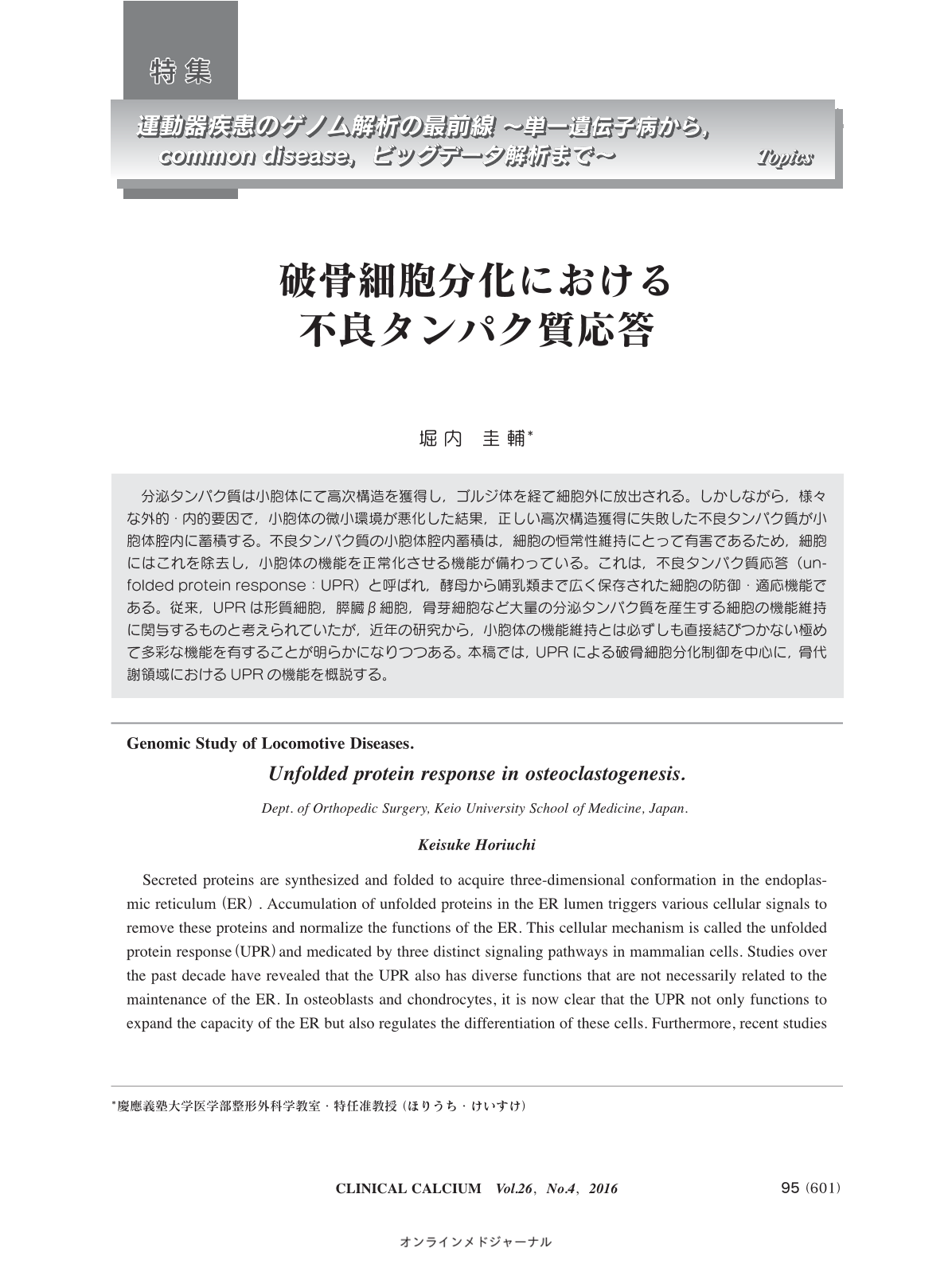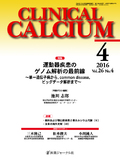Japanese
English
- 有料閲覧
- Abstract 文献概要
- 1ページ目 Look Inside
- 参考文献 Reference
分泌タンパク質は小胞体にて高次構造を獲得し,ゴルジ体を経て細胞外に放出される。しかしながら,様々な外的・内的要因で,小胞体の微小環境が悪化した結果,正しい高次構造獲得に失敗した不良タンパク質が小胞体腔内に蓄積する。不良タンパク質の小胞体腔内蓄積は,細胞の恒常性維持にとって有害であるため,細胞にはこれを除去し,小胞体の機能を正常化させる機能が備わっている。これは,不良タンパク質応答(unfolded protein response:UPR)と呼ばれ,酵母から哺乳類まで広く保存された細胞の防御・適応機能である。従来,UPRは形質細胞,膵臓β細胞,骨芽細胞など大量の分泌タンパク質を産生する細胞の機能維持に関与するものと考えられていたが,近年の研究から,小胞体の機能維持とは必ずしも直接結びつかない極めて多彩な機能を有することが明らかになりつつある。本稿では,UPRによる破骨細胞分化制御を中心に,骨代謝領域におけるUPRの機能を概説する。
Secreted proteins are synthesized and folded to acquire three-dimensional conformation in the endoplasmic reticulum(ER). Accumulation of unfolded proteins in the ER lumen triggers various cellular signals to remove these proteins and normalize the functions of the ER. This cellular mechanism is called the unfolded protein response(UPR)and medicated by three distinct signaling pathways in mammalian cells. Studies over the past decade have revealed that the UPR also has diverse functions that are not necessarily related to the maintenance of the ER. In osteoblasts and chondrocytes, it is now clear that the UPR not only functions to expand the capacity of the ER but also regulates the differentiation of these cells. Furthermore, recent studies suggest that the UPR is induced in osteoclast precursors after RANKL stimulation and has roles in osteoclastogenesis. This short review summarizes the findings of the recent studies on the unconventional roles of the UPR in osteoclast differentiation.



